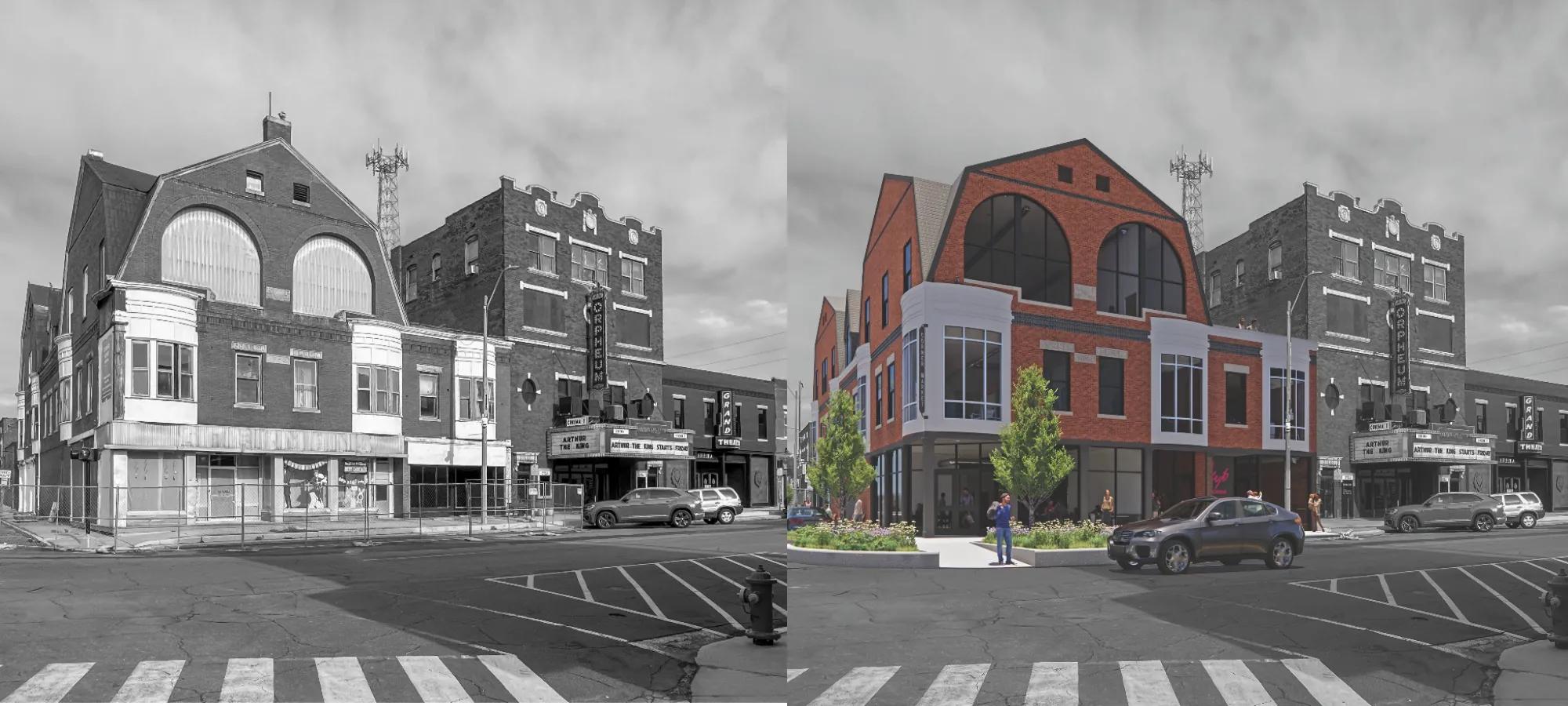We recently caught up with Garrett Stritzel, AIA, a newly licensed architect practicing at Hurst-Rosche, Inc. in Hillsboro, Illinois. With a passion for socially and environmentally responsible design, Garrett shares what inspired him to pursue a career in architecture and how he's advancing equitable and sustainable design in the small town he calls home.
Identity and Architecture
I became interested in architecture in middle school while researching potential careers for an English assignment. For years, I had spent time on my grandma’s couch watching HGTV makeover shows, fascinated by the mechanics of buildings and the way design can completely transform a space. When I learned what an architect does, I was immediately hooked. The field’s blend of creativity, technical problem-solving, and understanding of how buildings function drew me in right away. I’ve always loved tackling complex puzzles, and architecture offers that challenge every day. My detail-oriented nature makes me take pride in creating spaces that are both beautiful and purposeful. Over time, my interest has deepened to include the role architecture plays in advancing social and environmental justice.
I believe every design opportunity is also a chance to create equitable, inclusive, and sustainable spaces—because access to inspiring, functional places should be a right, not a privilege.
Journey to Licensure
I took a fairly traditional path to licensure, starting with a pre-professional architecture program right after high school. I earned my B.S. in Architectural Studies from Southern Illinois University (SIU) Carbondale, graduating magna cum laude, and then pursued my Master of Architecture, with a graduate certificate in social and environmental justice at Ball State.
Halfway through my sophomore year at SIU, I began working for Hurst-Rosche, which allowed me to pair classroom learning with hands-on professional experience and to complete nearly all of my Architectural Experience Program® (AXP®) hours before finishing graduate school. Balancing rigorous coursework, a part-time professional role, family commitments, and a social life was challenging, but taught me discipline, time management, and the importance of a strong support system.
After earning my M.Arch. in May 2024, I took a short break to relocate and begin working full-time before starting the Architect Registration Examination® (ARE®) exams. From day one in my new role, I set a goal to finish the exams within 12–18 months. Fourteen months later, I received the official notice that I had passed my final exam and promptly applied for licensure with the State of Illinois—achieving a goal I had set for myself back in middle school.

Rural Design Advocacy
To me, being a rural design advocate means fighting for the preservation and revitalization of rural communities facing social isolation, spatial injustice, and economic decline. My passion for this work in deeply personal.
Growing up in Hillsboro, Illinois, I watched many downtown historic structures sit vacant for a long time while neighboring towns populated their outskirts with strip malls and drive-through chain restaurants.
But through careful research and community engagement, adaptive reuse can preserve local heritage while creating equitable, mixed-use spaces that foster social connection and support local economies. My own experience is shaped by my thesis—which takes a critical look at adaptive reuse as a catalyst for positive change in rural areas—as well as Dewey Thorbeck’s holistic, community-based approach to rural design that considers land use, demographics, economics, and quality of life. I believe that advocacy is essential to ensure that redevelopment in rural areas is inclusive and benefits the entire community rather than just private interests.
Thoughtful design rooted in justice and sustainability can combat spatial inequities and help rebuild vibrant, resilient rural places where everyone has access to meaningful and functional environments.
Advice for Emerging Professionals
My advice to emerging professionals is to embrace every opportunity to learn—both in and outside the classroom—and never be afraid to ask questions. Some of my biggest breakthroughs have come from simply seeking clarification or listening to how others approach a challenge.
Pair your academic studies with real-world experience as early as you can; working while in school gave me context for what I was learning and helped me connect theory to practice. I’d also encourage you to find an area of the profession that excites you and make it your own. For me, that passion is rural design advocacy, and it has shaped my career goals and thesis work. Whatever your focus, ground your design process in listening—to your colleagues, your mentors, and especially the communities you serve.
Finally, be patient with your journey. It is not always going to be an easy path. Architecture is a very demanding profession, but if you approach it with curiosity, persistence, and a sense of purpose, every step will move you closer to meaningful, impactful work.
Want to hear more from architects across the U.S.? Check out more stories from NCARB's Architect Spotlight series.



